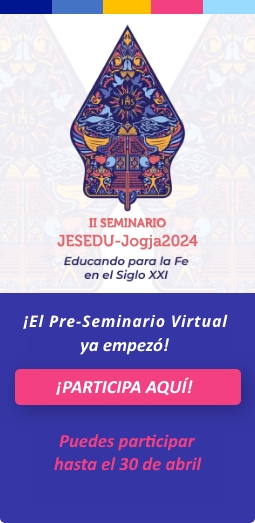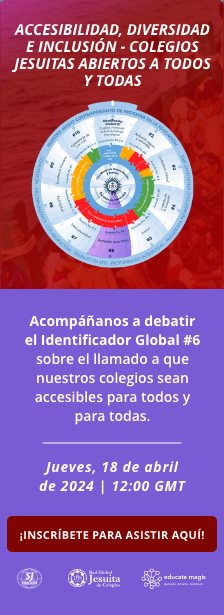In the sixteenth century Saint Ignatius knew the tyranny of distance when sending his Companions across the world. Although spatially distant he maintained connectedness by using the pen, writing over 7,000 letters, usually written twice to ensure they reached their destination. Saint Ignatius believed “…whatever appears in writing needs closer scrutiny than what is merely spoken; the written word remains as a perpetual witness…”. So, we find ourselves spatially distant though in the global world of technology we can connect with our students and families.
Saint Ignatius’ College Riverview in Sydney is a non-selective boys school Year 5 to Year 12 (11 to 18 year olds) for 1585 students including 320 boarders from regional areas of NSW, other parts of Australia and children of expats from various parts of the world. The College had commenced preparing for connected learning during Term 1 as it became more apparent that this would be necessary. Our Principal, Dr Paul Hine, has ensured through regular communication and updates, that we were kept informed as events rapidly changed and by Wednesday, 25 March we commenced our connected learning program.

Students are required to maintain the regular school routine and lesson timetable. Our academic faculties are using a variety of strategies to provide engaging learning experiences. Zoom enables teachers and students to continue with face-to-face lessons. Zoom can also be used for group work through the “breakout room” facility and lessons can be recorded for future reference by students. An effective Zoom strategy has been to provide a 10 to 15 minute explanation of lesson outcome, goal or content and provide an opportunity for students to complete work and then check back in toward the end of the lesson. Some Faculties have decided to develop a roster for using Zoom to teach two or more classes at a time thus freeing up time for lesson preparation. This has the advantage of students experiencing different pedagogical styles.
Teachers are also using the learning management platform Canvas, creating units of work with lessons that can include video clips of content, discussion or journal posts, quizzes, tests and also upload tasks for feedback. Google Docs is also being utilized for sharing and commenting on work. Our Music Faculty is using Google Docs for music teachers to provide video instructions for musical instruments and feedback on student’s performances. A member of the Personal Development Health and Physical Education faculty has videoed exercises for students and staff that can be done at home. This is also an opportunity for students to engage in inquiry-based projects that can be completed over a longer period of time requiring depth of knowledge and understanding. What we have found over the last few days is not to overload the students and to give them time for a break in between lessons.
We also have a number of students who require additional learning support and our Learning Enrichment team are using Zoom to ensure that our students are able to continue to access assistance and support when required. For students in remote indigenous communities with limited access to the internet booklets for work have also been provided.
At Riverview we have 14 students in the Special Education Inclusion Program that caters for students with intellectual disabilities. The staff in this faculty have produced packs for our students so that they can also continue their learning at home.
Professional Learning has taken on a new meaning with teaches quickly upskilling in using new software and adapting the existing platforms for connected learning. Teachers are assisting each other and being supported by a team of fellow teaching companions who accompany teachers on a review and development process throughout the year. We are also looking to develop a regular newsletter for staff that will include and Ignatian prayer or Examen, teaching and learning ideas and wellbeing suggestions.
While the academic needs of the students are being met supporting their spiritual and wellbeing needs is also essential in navigating this time of change. A prayer for the day appears on students’ virtual timetable as does a link to a daily Examen. Our pastoral care system is organised in vertical houses and each Head of House maintains contact with students and families. Zoom is also a useful tool in maintaining house meetings.
For all the business of the recent weeks in moving to connected learning the heart of what has been happening is the constant inter play of experience, reflection and action – the Ignatian way of proceeding and through this we find God in the midst of all that is happening to keep our community connected. We are all being called to live out the Apostolic Preference “to accompany the young in the creation of a hope-filled future.”
Inicia sesión o Hazte miembro
para crear y ver comentarios

